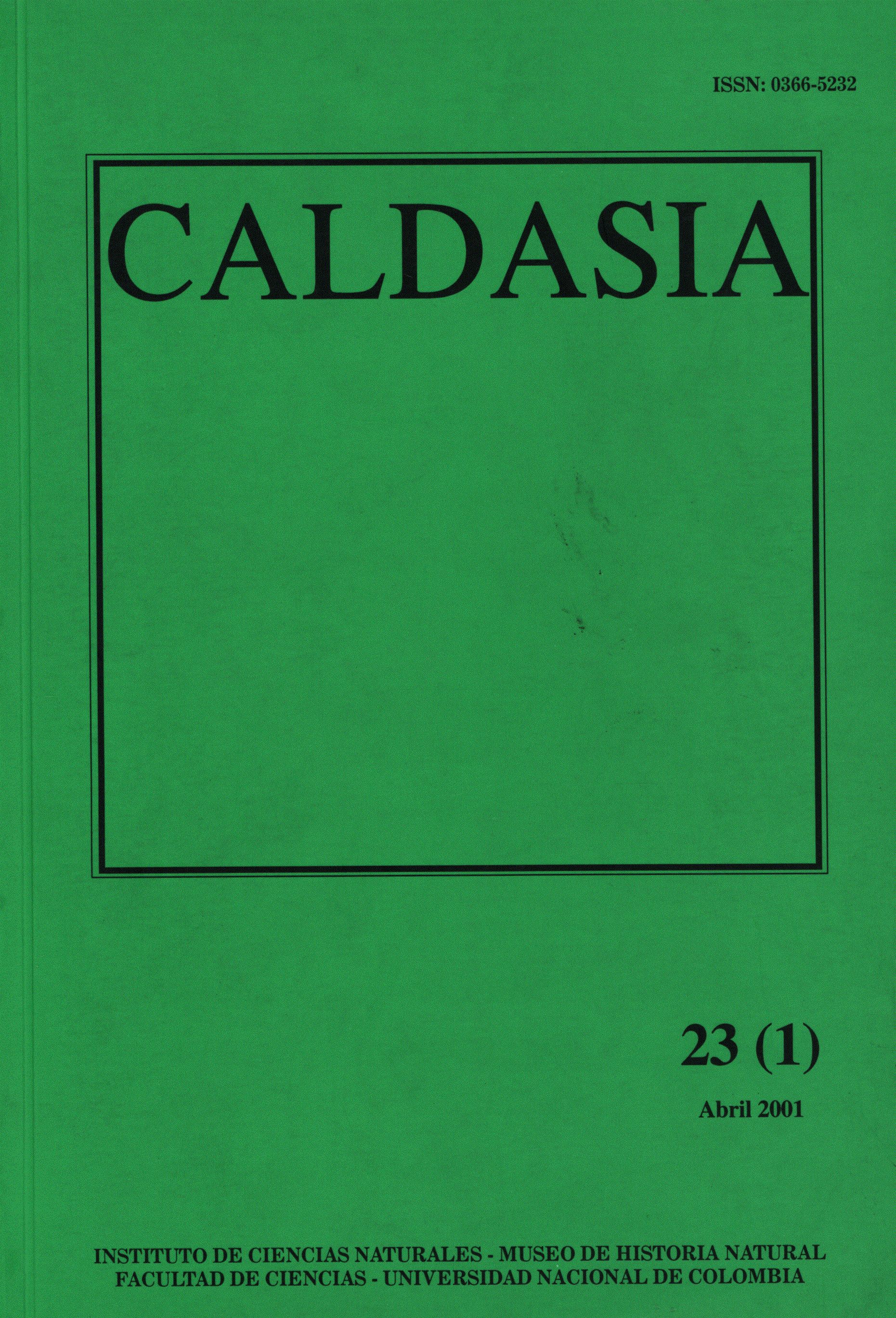Aproximación al conocimiento de los bejucos de Colombia
Keywords:
bejucos, diversidad, Angiospermas, Dicotiledóneas (es)Climbers, diversity (en)
Downloads
Con base en la revisión de literatura y de los ejemplares del Herbario Nacional Colombiano (COL) se elaboró la lista de familias, géneros y especies de bejucos presentes en Colombia. En total se hallaron 1820 especies pertenecientes a 310 géneros y 70 familias. Las Angiospermas constituyen el grupo más diverso de bejucos con el 99.3% del total de especies, y entre ellas las Dicotiledóneas con 60 familias, 294 géneros y 1706 especies presentan la mayor diversidad.
The list ofvascular plant families and genera containing colombian climbers is updated here. A total 1820 species of climbers belonging to 310 genera and 70 families were registered. The angiosperms is the largest group of climbers, containing 99.3% of all species. The dicotyledons with 1706 species, 294 genera and 60 families is the most diverse.
How to Cite
APA
ACM
ACS
ABNT
Chicago
Harvard
IEEE
MLA
Turabian
Vancouver
Download Citation
Article abstract page views
Downloads
License
Copyright (c) 2001 Caldasia

This work is licensed under a Creative Commons Attribution 4.0 International License.
Authors who publish with this journal agree to the following terms:
- Authors retain copyright and grant the journal right of first publication with the work simultaneously licensed under a Creative Commons Attribution License that allows others to share the work with an acknowledgement of the work's authorship and initial publication in this journal.
- Authors are able to enter into separate, additional contractual arrangements for the non-exclusive distribution of the journal's published version of the work (e.g., post it to an institutional repository or publish it in a book), with an acknowledgement of its initial publication in this journal.
- Authors are permitted and encouraged to post their work online (e.g., in institutional repositories or on their website) prior to and during the submission process, as it can lead to productive exchanges, as well as earlier and greater citation of published work (See The Effect of Open Access).





























